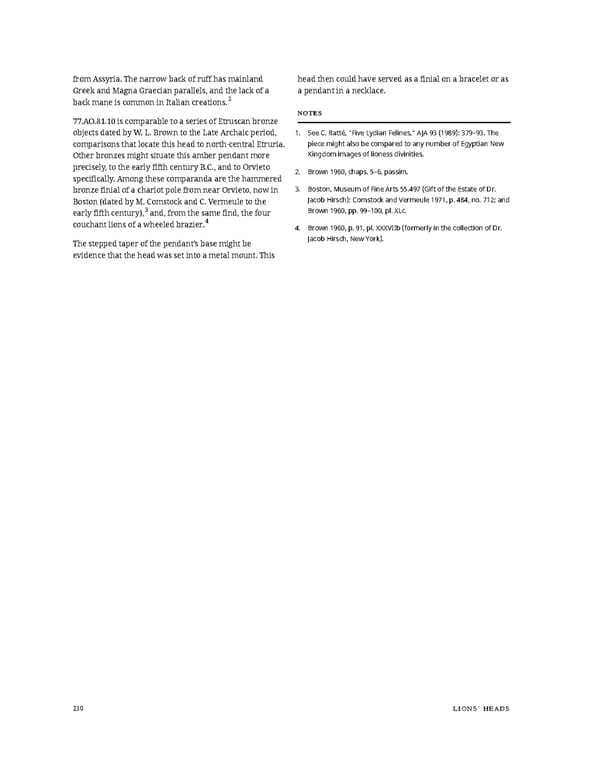from Assyria. The narrow back of ruff has mainland head then could have served as a finial on a bracelet or as Greek and Magna Graecian parallels, and the lack of a a pendant in a necklace. back mane is common in Italian creations.2 NOTES 77.AO.81.10 is comparable to a series of Etruscan bronze objects dated by W. L. Brown to the Late Archaic period, 1. See C. Ratté, “Five Lydian Felines,” AJA 93 (1989): 379–93. The comparisons that locate this head to north-central Etruria. piece might also be compared to any number of Egyptian New Other bronzes might situate this amber pendant more Kingdom images of lioness divinities. precisely, to the early fifth century B.C., and to Orvieto 2. Brown 1960, chaps. 5–6, passim. specifically. Among these comparanda are the hammered bronze finial of a chariot pole from near Orvieto, now in 3. Boston, Museum of Fine Arts 55.497 (Gift of the Estate of Dr. Boston (dated by M. Comstock and C. Vermeule to the Jacob Hirsch): Comstock and Vermeule 1971, p. 484, no. 712; and early fifth century),3 and, from the same find, the four Brown 1960, pp. 99–100, pl. XLc. couchant lions of a wheeled brazier.4 4. Brown 1960, p. 91, pl. XXXVIIb (formerly in the collection of Dr. The stepped taper of the pendant’s base might be Jacob Hirsch, New York). evidence that the head was set into a metal mount. This 230 LIONS’ HEADS
 Ancient Carved Ambers in the J. Paul Getty Museum Page 239 Page 241
Ancient Carved Ambers in the J. Paul Getty Museum Page 239 Page 241